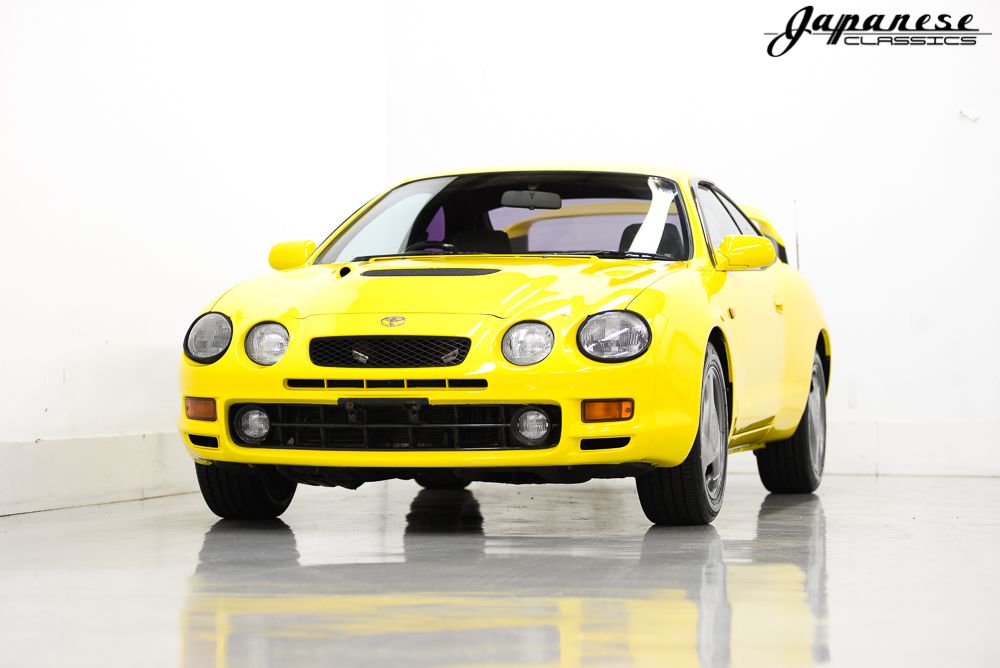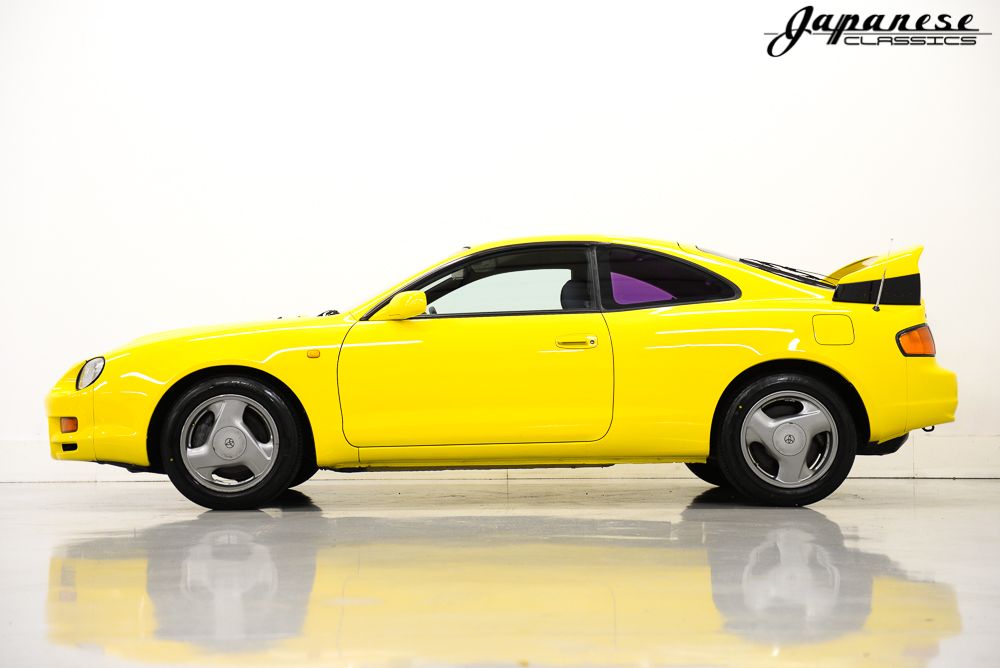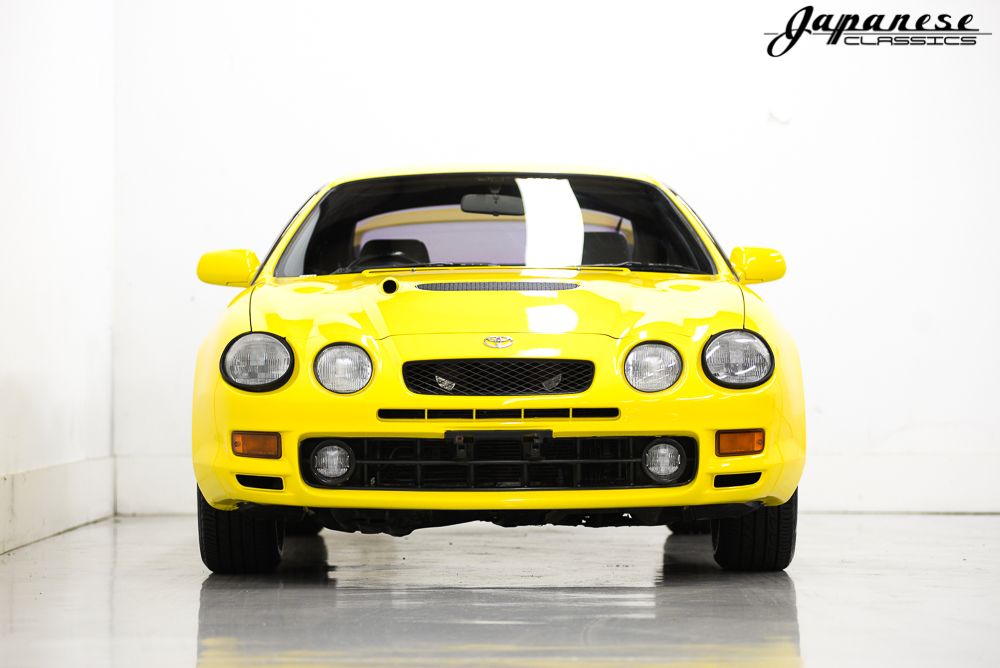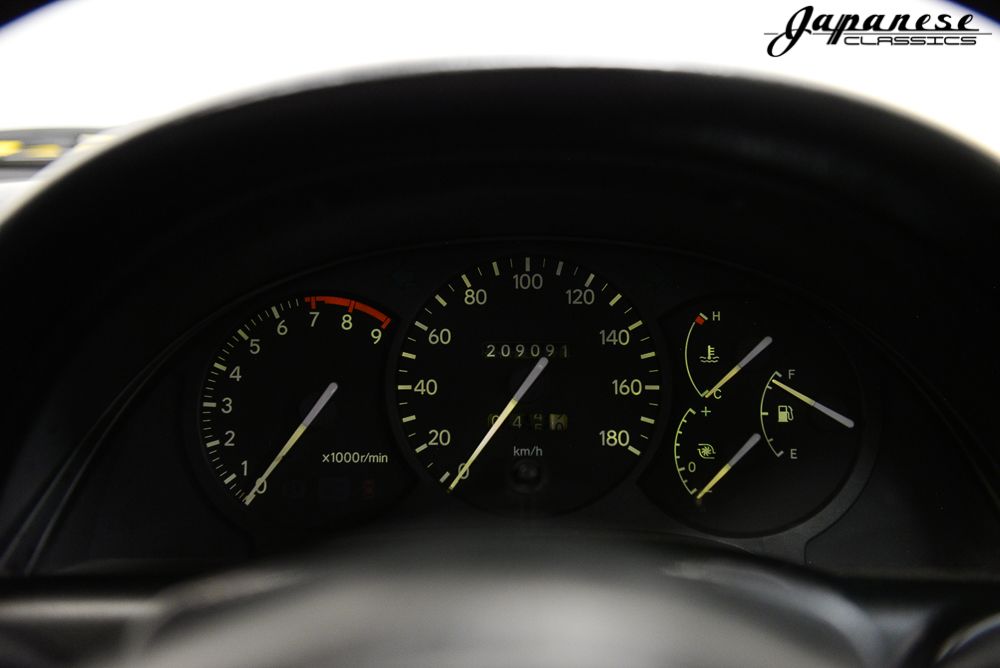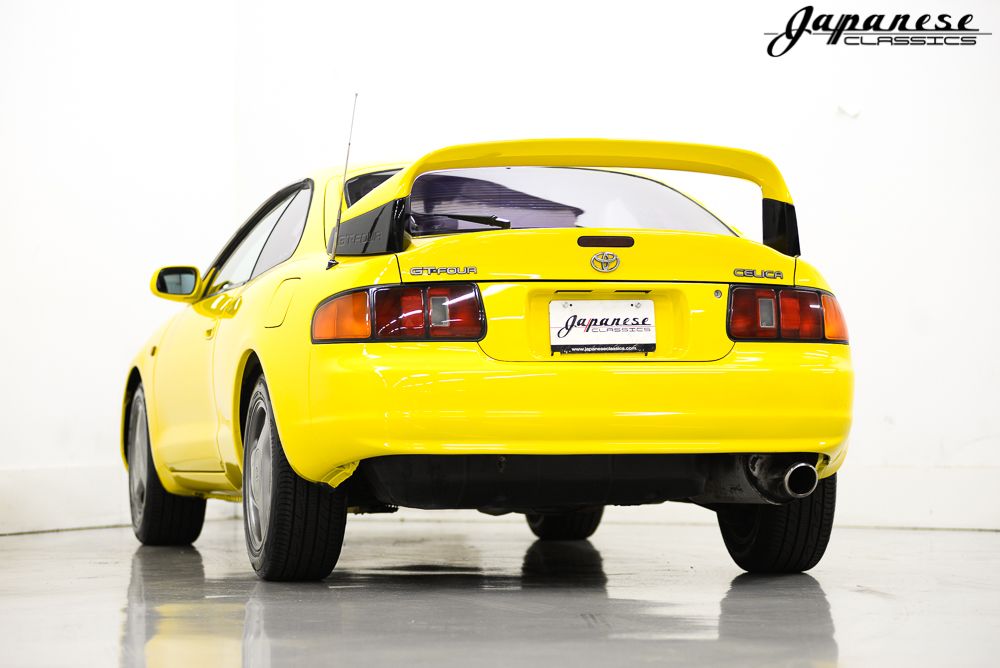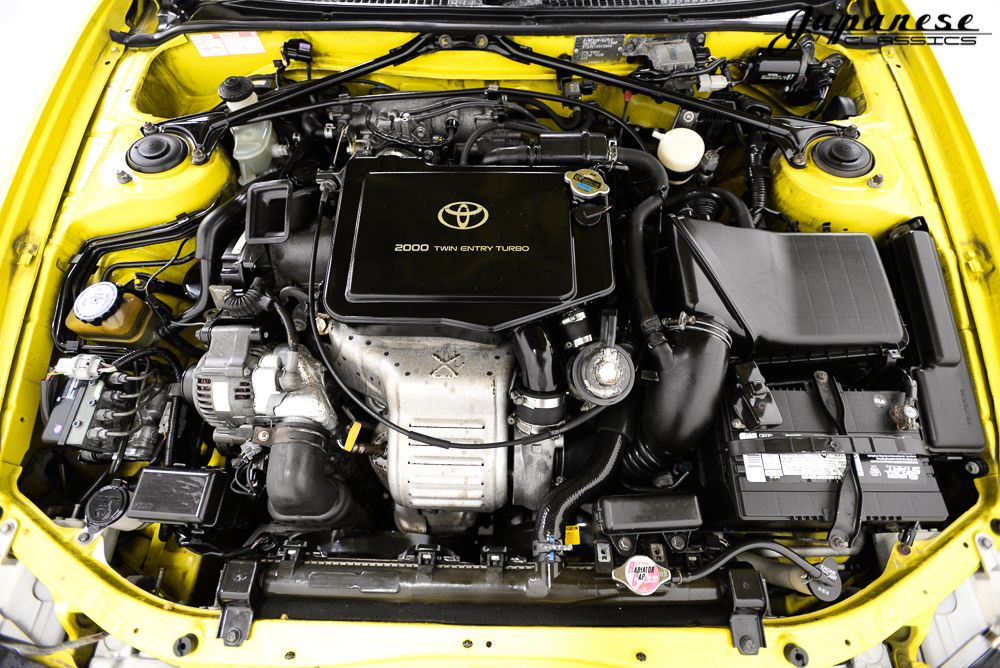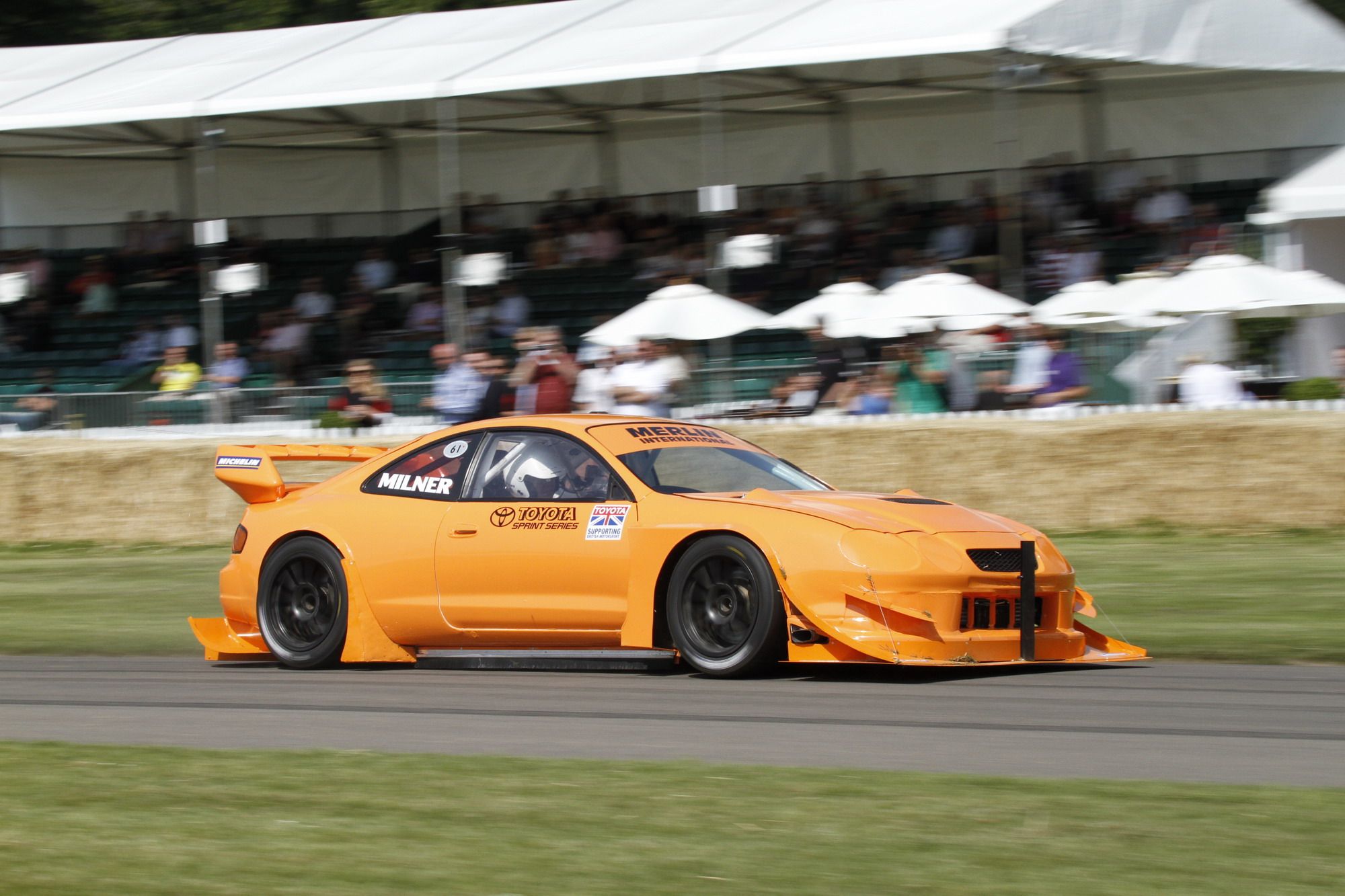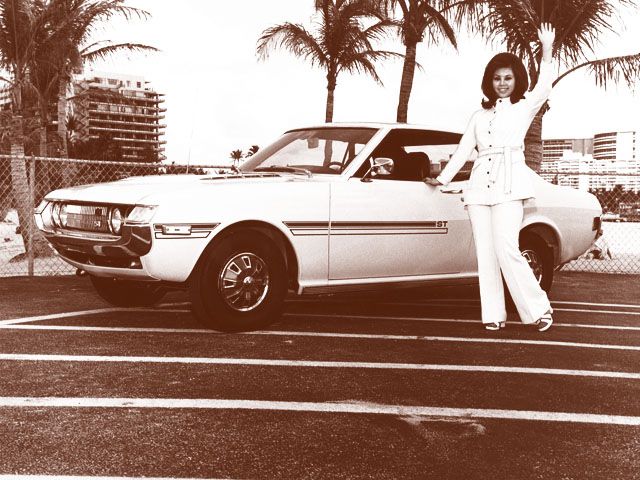Toyota, the company known Stateside for building everybody’s favorite fleet car, the Camry, looked to brush off its reputation as a boring automaker and, at the same time, prove to the world that it could not only make cars by the bucketload but also innovate and compete with the best in the arena of motorsports. Since the ‘80s, Toyota had been involved in the World Rally Championship and the advent of the Group A regulations that replaced the perilous Group B after 1986 was seen by Toyota executives as a great way to really get in the game with the Supra GT-Four. The ultimate version, known as the ST205, briefly competed before being banned and this is the road-legal version of that very car – albeit not in the bombastic Castrol livery.
What would you say about a 1994 Celica that cranked out over 250 ponies from the factory and came equipped with the WRC-specific water injection, sport manifold, and turbocharger anti-lag components installed? Granted, the anti-lag isn’t working and, as such, nothing keeps the turbo from spinning off-throttle but the components are there as are most of the aerodynamic upgrades applied to the Group A car driven at the time by the likes of Didier Auriol and Carlos Sainz: an elevated rear wing and the different hood. On top of that, Toyota only ever made 2,500 of these WRC Edition ST205s so it’s mighty rare, which is why Japanese Classics is asking $18,000 for the example it’s selling, one that’s been driven quite a bit. It shows 129,000 miles on the odometer, but otherwise presents itself in a very tidy shape given its age and mileage. The early Celica GT-Four models are now just old enough to satisfy the pesky 25-year rule for cars that weren’t originally sold in the US so you will see more pop up for sale here but WRC Edition examples will surely be few and far between.
In the '90s, Toyota campaigned both the Celica and the Corolla in the WRC
When most of us are tasked with thinking about the best era in world rallying, images of the flared Audi Quattro or the mid-engined Ford RS200 or the Martini-liveried 037 or Delta S4 flood in but this is highly unfair to the cars that came in to replace the dramatic and, frankly, way too dangerous Group B monsters - the Group A cars. These were, just like their circuit-going brethren, cars that were almost unchanged from a visual standpoint compared to the homologation version that people could actually buy and enjoy.
The Group A set of regulations was initially introduced in sedan racing to replace Group 2 (think of all the round-flare warriors like the Ford Capri and the BMW CSL) and then also made its way into the world of rallying, taking center stage after the demise of Group B that meant FIA didn't follow through with the introduction of the proposed Group S, a class for even more extreme prototype-like rally cars. At first, Group A cars were based on rather pedestrian road cars since the lower limit for homologation was a whopping 5,000 units (you only needed to build 200 cars to homologate a Group B rally car, for instance), this tally dropping to just 2,500 units by 1993. Most of the Group A cars were AWD and turbocharged and, although none featured the flamboyant body kits of Group B cars, they ended up being faster than the cars they replaced while being safer to drive at the limit.
During the years when Group A cars were dominating the proceedings in the World Rally Championship before the advent of the so-called two-wheel-driven Kit Cars and, later, the S2000 and then the WRC cars, manufacturers flocked to battle for supremacy with cars that really were relevant from a marketing point of view since they looked so much like the product you'd find in the showrooms. Among the manufacturers that enjoyed happy days in the sun during the '90s, the heyday of Group A, you got to include Mitsubishi with its various iterations of the Lancer Evolution, most successfully wheeled by Tommi Mäkinen, Ford, with the Escort Cosworth RS, the Subaru Impreza and Legacy, the Lancia Delta Integrale, and, of course, Toyota's Celica and Corolla models.
That small team would become Toyota Team Europe (TTE), the organization that would oversee all of Toyota's works-backed programs in the WRC and in other areas of motorsport such as sports car racing beginning in 1993 when the newly-formed Toyota Motorsport Group unveiled its first prototype, the TS010 Group C car. TTE's first major WRC victory came almost a decade after Andersson's first tentative steps with the Celica TA22. It was rally ace Björn Waldegård, the first official WRC Driver's Champion, who delivered the goods in the 1982 Motogard Rally in New Zealand.
At the time, Toyota was employing the RWD turbocharged Celica, a car that proved extremely rugged if not outstandingly quick. Thanks to its ruggedness, the Celica scored an impressive series of six victories in the Safari and Ivory Coast rallies between 1983 and 1986, usually by outlasting the AWD competition. Encouraged by these results, Toyota decided to fund a fully-fledged assault on the WRC when it was clear that Group A would take over the mantle of Group B after the sad 1986 season came to an end. However, Toyota didn't have a car ready for the first round of the 1988 season and TTE only debuted the first iteration of the fourth-generation Celica (known internally as the ST165) at the Tour de Corse tarmac rally which was round number five that year. The car had been developed under the watchful eyes of Chief Engineer Karl Heinz Goldstein while Juha Kankkunen and Carlos Sainz provided invaluable feedback during testing.
The ST165 was powered by the turbocharged 3S-GTE 2.0-liter engine that developed 265 horsepower in race trim, an appreciable 83 horsepower over the stock car's output. At first, the ST165 was plagued with reliability issues relating to poor engine and transmission cooling, that had to do with reduced airflow entering into the transverse engine bay. Initially, TTE outfitted the car with fixed headlights to cure it of its cooling problems before FISA forced Toyota to run the production-based pop-up headlights lifted up at all times. In spite of all this, the Celica was on the podium during its first season of competition as Björn Waldegård came home third overall in the 1988 Lombard RAC Rally.
Then, in 1989, Kankkunen, Kenneth Eriksson, and Carlos Sainz all scored one podium finish in the first part of the season before Kankkunen broke through to score the ST165's first WRC win in the 1989 Australian Rally. Then, following his plea towards team boss Ove Andersson to let him run on all surfaces, Carlos Sainz successfully mounted a championship challenge in 1990 by winning outright four times (Greece, New Zealand, Finland, and Great Britain) and surpassing in the standings the three Lancia stalwarts, Miki Biasion, Didier Auriol and Juha Kankkunen who'd moved over from Toyota. The following season, Sainz and co-driver Moya won five times but the championship went the way of Juha Kankkunen by a slim seven-point margin. In all, between 1989 and 1992, the Celica won thirteen WRC rounds but the Lancia Delta Integrale proved slightly more reliable.
Another issue that Toyota dealt with at the time "concerned the transmission, which could switch unpredictably from four-wheel drive to rear-wheel drive if the electronically-controlled differential got too hot." In view of all of these niggly gremlins, Toyota introduced the replacement of the ST165 while it was still competitive. Known internally as the ST185, it was based on the fifth-generation Celica and featured a much more rounded body although the pop-up headlights stayed put.
Toyota dominated both the 1993 and the 1994 seasons taking both the Drivers' and the Manufacturers' crown despite mounting pressure from the likes of Subaru and Ford - Lancia quit at the end of 1993 out of the blue. By the time Toyota wrapped up the 1994 title, in August, everyone was already examining the potential of the ST185's replacement, the ST205 based on the sixth-generation Supra. It differed stylistically quite significantly from the model it would replace and it also lacked the power superiority of the ST185 due to the introduction of a new, smaller air restrictor (or restrictor plate) meant to limit Toyota's advantage.
Toyota countered with a host of innovations, chief among which was the turbo anti-lag system, while four-channel ABS made the car more driveable. The car debuted in the 1994 Rally Australia, a round that didn't count towards the World Championship standings. Kankkunen finished second overall, beaten only by Subaru's Colin McRae although the car wasn't fully homologated at the time. The first time it ran as a homologated Group A rally car was at the 1994 Lombard RAC Rally where Kankkunen again finished runner-up, again behind McRae.
Apparently, during the side-by-side special stage in Australia, one FIA official noticed how the Celicas would consistently beat their rivals on the dash towards the first turn of the stage and this raised some eyebrows and, later, was the basis of an inquiry that would hit Toyota hard come the Spanish round of the championship. During Rally de Catalunya, the FIA seized the team's turbochargers and found out that it'd been using a device that eluded the restrictor plate and allowed for more air to enter the turbochargers. In essence, "Toyota's engineers figured out a way to have the restrictor plate in the turbocharger, but as the car picked up speed, the restrictor plate automatically moved out of the way, which fulfilled the spirit (the restrictor plate was in the turbocharger!) if not the letter (but it wasn't doing anything!) of the law," according to HowStuffWorks.com.
Upon making this discovery, the FIA issued Toyota with a harsh 12-month ban from the WRC as well as erasing all of the championship points it and its drivers had amassed throughout 1995. While Toyota would not return until 1998 when the eighth-generation (E110) Corolla replaced the Celica as the factory's designated rally car, the ST205 was still seen in European rally events throughout 1996, albeit in private hands. What is more, FIA allowed some privateers to even run it in WRC events, Juha Kankkunen finishing second in the 1996 Finnish Rally while ex-factory driver Armin Schwarz won the European Rally Championship that same year.
The road-going version
In 1994, when Toyota debuted the ST205 in the WRC, it also introduced the homologation version of the Group A beast known as the Celica GT-Four WRC Edition. While we in the United States were able to buy the ST165-based GT-Four and the ST185-based GT-Four (known as the Celica All-Trac Turbo), the ST205 GT-Four was never available in North America although the more mundane versions of the sixth-generation Celica did make it here.
Likewise, the WRC Edition was also never officially sold in the US which is why it had to bow to the 25-year rule that basically only allows for import on a car that wasn't originally sold in the US to happen 25 years after it was introduced in the markets where it was sold. This means that now, in 2019, we too can enjoy the ST205 GT-Four and this is the most potent of the lot.
Equipped with the third generation of the 3S-GTE turbocharged, 2.0-liter, inline-four engine, the WRC Edition put out somewhere in the region of 250 horsepower when new, up by little over 10 horsepower compared to a standard GT-Four. Out of the 2,500 WRC Edition examples built, 2,100 were sold in Japan, 300 were exported to Europe, 77 to Australia, five were sold in New Zealand and a few went to the general markets. All were fitted with ABS although the European models only came with manual A/C.
Toyota Gen 3 3S-GTE Turbo Engine Specs
|
Displacement |
2 liters |
|
Configuration |
inline-four, water-cooled |
|
Turbocharged |
yes |
|
Max boost pressure |
13 psi (0.9 bar) |
|
Power output |
245-255 hp @ 6,000 rpm |
|
Torque |
224 lb-ft (304 Nm) @ 4,000 rpm |
|
0-60 mph |
6.1 seconds |
|
Top speed |
149 mph (240 km/h) |
To comply with FIA rules, the WRC Editions featured some cool extras not found on run-of-the-mill GT-Fours: the plumbing required to activate the anti-lag system (in other words, the road car didn't have anti-lag but parts of the system were there), a water spray bar and pump for the front intercooler, a basic water injection system, a small hood-mounted spoiler behind the windscreen washers, and the tall rear wing. In the front, the ST205 featured a massive intake below the ostensibly smaller one guarded by the pair of rounded headlights. Within the confines of this rectangular inlet sat the two fog lights while the indicators were placed outboard above two other small vents.
The yellow example you see here is no garage queen having covered in its lifetime over 193,000 miles but as you can see from the images it's had caring owners over the years although it does show its age in some areas (check that shifter knob, for instance). Having said this, you can't blame anyone for wanting to drive what is a really fun two-door sports car equipped with a turbocharged engine and AWD. While you might've read recently that you can find an ST205 GT-Four in Canada (or you could) for about $6,000, if you want a genuine WRC Edition homologation special you'll have to fork out a bit more than that.
Toyota Celica ST205 Dimensions and Weight
|
Wheelbase |
99.8 in |
|
Length |
174 in |
|
Width |
69 in |
|
Height |
51.4 in |
|
Curb weight |
3,064 lb (1,390kg) |
In fact, the RHD example you see in these images is listed for $17,995 and the seller, Japanese Classics, says that it comes complete with papers that attest that it passed the "Virginia state safety inspection and the next maintenance won't be needed for the next 3,100 miles." While it may not seem that outrageous to pay the equivalent of a new Golf, Civic or Kia Soul for what is, in essence, a legendary rally car for the road, consider that you could also purchase an early '00s Porsche Boxster for roughly the same amount of money - granted, the Celica is far rarer.
Further reading
800 Horsepower Celica, the Fastest at Goodwood
1970-2006 Toyota Celica History

